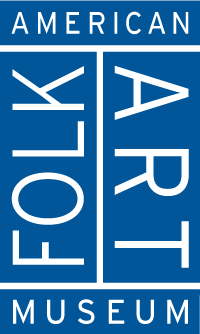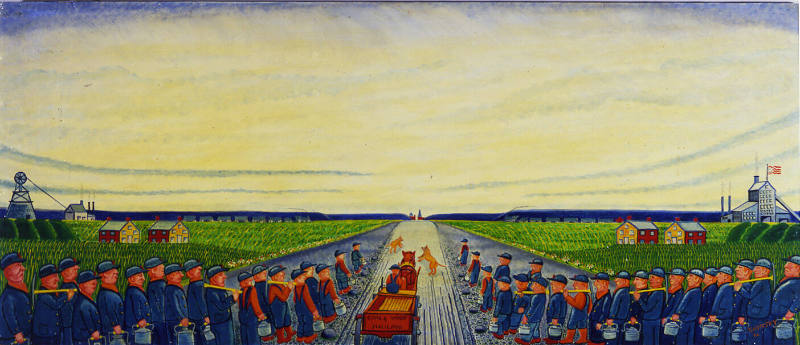Record Details
Monday Morning
As the pre-dawn light fills the lowering sky, a line of men makes the long trek to the anthracite coal mines that were the mainstay of the Pennsylvania economy. They carry their lunch and water in tin pails; some also carry the pick axes that they will use to pry coal from veins deep underground in the mine shaft. Each figure is clad in a heavy blue uniform. The thick cloth affords some protection from the unremitting chill and dank of the mines, and the dark color absorbs the coal dust that will cover them by day’s end. Their visored headgear will sport lamps to enable each miner to see in the darkness underground. After they clock in, the men will load into small carts on tracks and be slowly lowered into the depths of the mine where they will labor for many hours, mindful of trapped gases, and other dangers.
John "Jack" Savitsky was born in Silver Creek, Pennsylvania. Like his father before him, he worked in the mines for thirty-five years, starting as a slate picker at the age of twelve and graduating to the mines at fifteen. He had little formal education, only attending public school through the sixth grade. After laboring in this region for years, he relocated to Lansford and found work in the No. 9 Coaldale Colliery. When the mine closed in 1969, he retired. He had been able to purchase a red brick house, where he lived with his wife and their son. His years in the mines took their toll, and he developed black lung, emphysema, diabetes, and heart disease. After retiring, Savitsky started to draw and paint the deceptively cheerful and cartoonlike autobiographical scenes.
Savitsky’s terse inscription on the back of one of his paintings suggests the narrowness of routine in the life of a miner:
Sunrise in the coal region./I went to school./ I went to work./ And on pay day, I went out and got drunk.
Stacy C. Hollander, “John "Jack" Savitsky,” exhibition brochure for American Perspectives: Stories from the American Folk Art Museum Collection (New York: American Folk Art Museum, 2020).
Object information is a work in progress and may be updated with new research. Records are reviewed and revised, and the American Folk Art Museum welcomes additional information.
To help improve this record, please email photoservices@folkartmuseum.org














